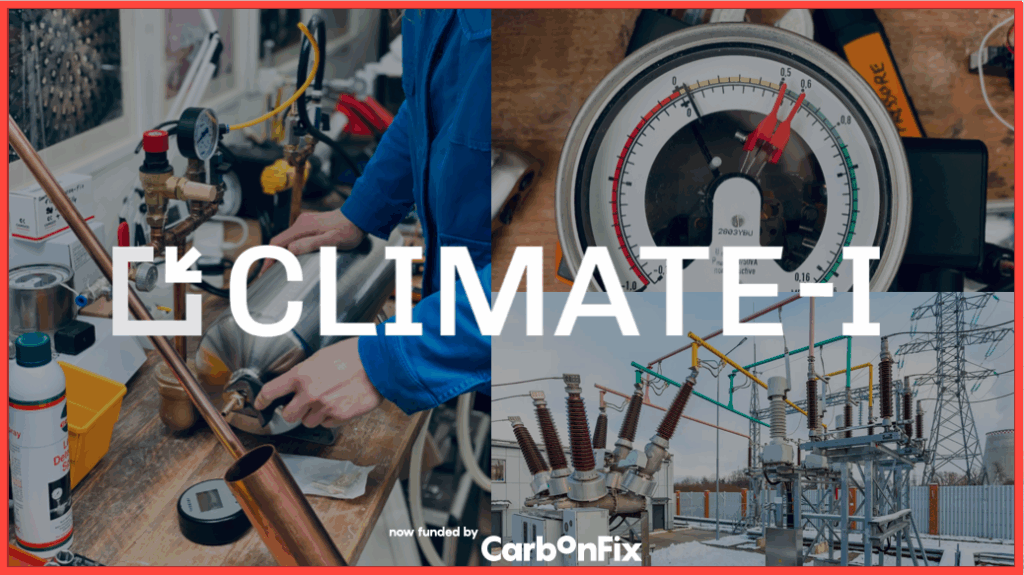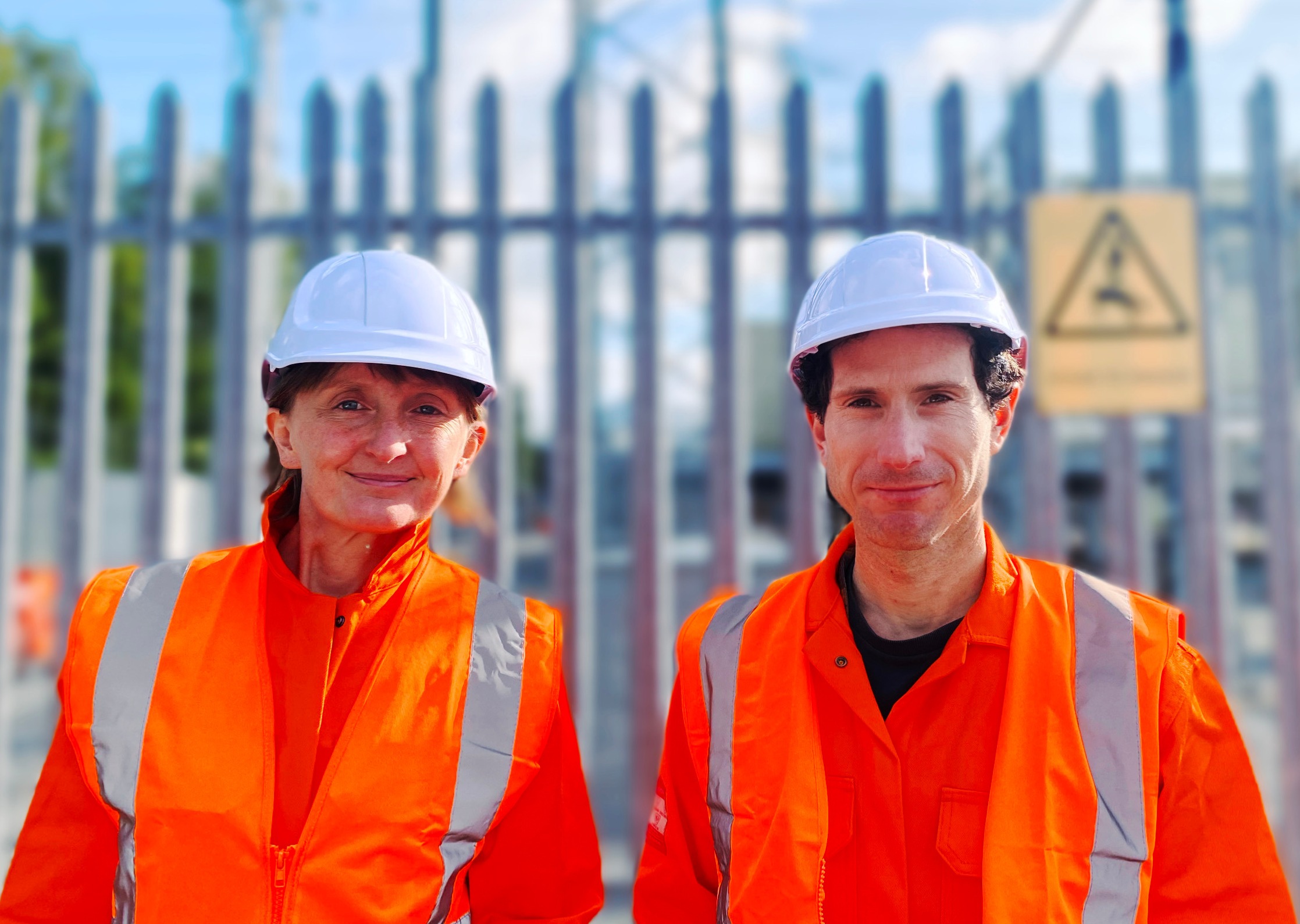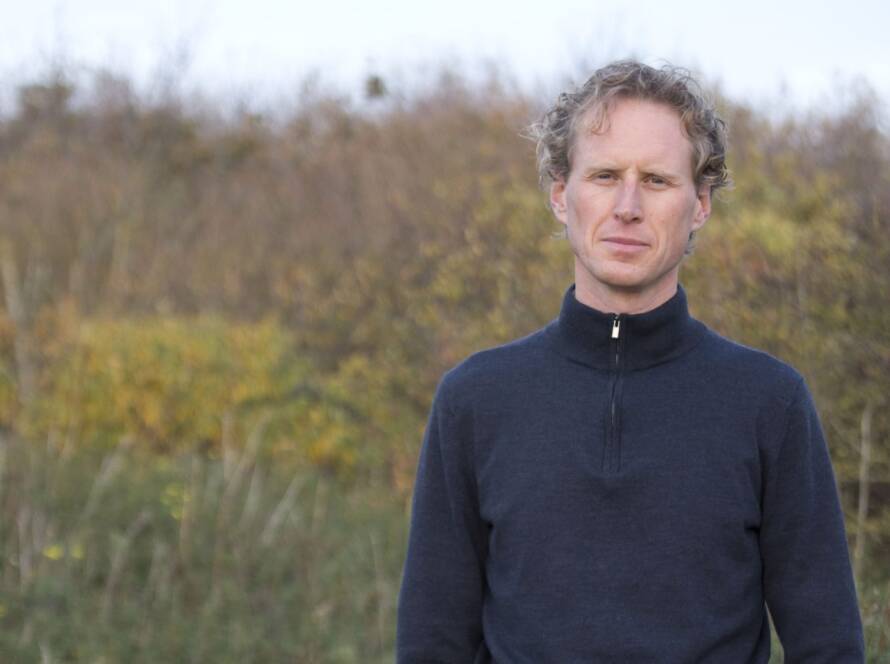Tackling SF6 – The Hidden Climate Threat
Hey Elinor! Why are you called Climate-i?
“Our focus is on mitigating fluorinated gases – known as F-gases. At the outset we were curious why so few people in the cleantech space were focused on these gases when they are a big driver of climate change: refrigerant management is in the Top 10 solutions listed by Project Drawdown and they are the fastest growing category of emissions. So we wanted a name that conveyed visualising and shedding light on an issue – and gases – that are largely invisible, both literally and metaphorically.”
What inspired you to focus on F-gases, particularly SF₆, rather than more widely discussed climate issues?
“F-gases have a range of applications, from refrigeration and cooling equipment through to the insulation of high voltages in substations, which is where SF₆ is used. In both these use cases, climate change is driving more deployment of F-gases which in turn drives more global heating. For example, a warming climate entails more demand for air conditioning and refrigeration which in most parts of the world still means increased use – and leakage – of F-gas refrigerants. Meanwhile, the world is almost doubling the capacity of the electricity grid in the next 15 years to facilitate decarbonisation, yet that will entail more deployment of SF₆. Our aim is to decouple these trends from a growth in F-gas emissions.”
Should we not just ban F-gases, then?
“There are moves in that direction, such as the Kigali Amendment to the Montreal Protocol, an international agreement to phase down F-gas refrigerants and new EU regulations covering SF6. But these measures take time to come into effect, and, critically, bans do not tackle the stocks of these gases built into existing equipment which are still liable to leak. Managing these stocks better, to ensure they are not released into the atmosphere, represents a huge opportunity for climate action: refrigerant management alone represents around a 90GT CO2e mitigation opportunity and existing stocks of SF6 (if they were released) are equivalent to around a 1/10th of the world’s annual emissions, that is more that the EU emits every year.”
Your solution is hardware combined with software. Where are you in your technology development process?
“We are currently prototyping our SF6 capture hardware in the lab and will be conducting the first field trial this year. Our customers will be companies that own SF6-insulated electrical switchgear. That primarily means electricity grid and generation companies. For field trials, we will be working with companies who know they have SF6 leaks and want to address them, though in future we’ll also be able to deploy remote leak monitoring and analytics to help customers identify leaks earlier than they currently can.”
How do you look upon patenting technology when we’re in a global hurry to address climate change?
“Addressing climate change requires cleantech solutions to be scaled. And in order to achieve scale, you tend to need investment. One thing investors look for is assurance that the idea at the heart of your business is protected; that no one else will be able to commercialise the same technology and undermine your growth and investors’ return. That’s why patents are so important. If a company has already established itself as a category leader, the considerations around open-sourcing are different.”
Why isn’t it standard operating procedure across the electrical industry to sequester SF6 ? What is it used for anyway?
“The core job of electricity grid companies is to transmit and distribute electricity and that, rightly, is their central focus. SF6 leakage is an unfortunate by-product of this process so hasn’t been centre-stage but is now beginning to receive more attention which is great.
“SF6 is an excellent electrical insulator, much better than air. This allows high voltage conductors inside substation equipment to be much closer together, so the equipment – and the substation – can be much smaller. While electricity grids globally use most SF6, it is also used in semiconductor manufacturing – for the production of everything from smartphones to flatscreen TVs.”
What happens to the gas once captured?
“There are several options for the captured gas: recycling for re-use, destruction, or, in the future, perhaps repurposing. This is a subject we will be investigating further in the coming months.”

Is your solution contingent on mandatory laws to be successful?
“Regulation is certainly a key driver. So is managing environmental risks which, if they occur, can affect a company’s reputation and financial position. However, our solution will contribute to better overall management of a company’s assets which makes good business sense too, particularly where those assets are providing a service as critical as electricity.”
With the enormity of the challenge in front of us, how do you define success for Climate-i?
“Our ambition since we started the company has been to reduce emissions by at least 10MT. In the near term, it’s about capturing our first kilogram of the gas from a customer’s site, as that’s equivalent to over 24 tonnes of CO2. Even though we are at the pilot stage, we’re very hopeful that as a company we can make a meaningful impact on emissions.”
What do you wish others outside the climate space knew that those inside it know?
“In an increasingly divided world, I am not a fan of segmenting people as either inside or outside the climate space. A huge range of people have the potential to make a positive difference even if they are not explicitly in ‘climate change jobs’. That’s definitely true of the engineers we meet who are looking after SF6 equipment in electricity substations. We should be finding and celebrating the unsung heroes of climate action.
“But, accepting the premise of your question, it’s that the long-term costs of inaction on climate change outweigh the costs of action. To take one example, measures such as reducing coal-fired power stations and rolling-out clean cookstoves are positive for the climate and human health, meaning less spending to address healthcare problems. There is a parallel here with F-gases, some of which are regarded as ‘forever chemicals’ or PFAS, long-lived compounds that have been linked with a number of human diseases. So while climate action isn’t always easy, it is helping to create a safer and healthier planet for people today and in the future.””
*.*
Interested in more founders’ stories? Subscribe to our newsletter.
Interested in regular CarbonFix updates? Connect on LinkedIn.




